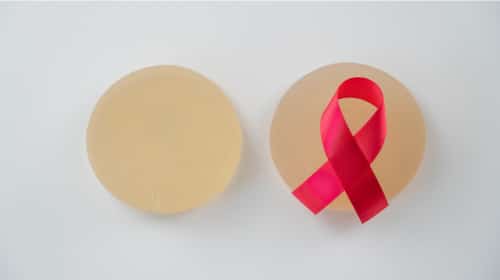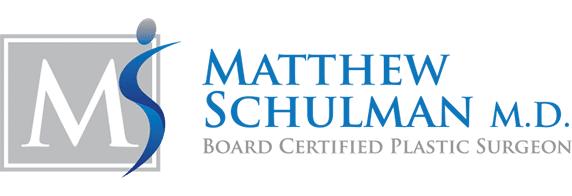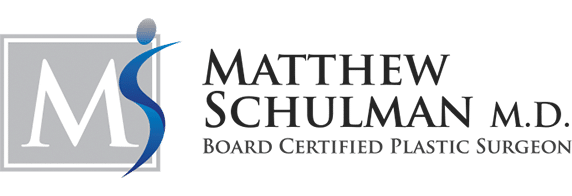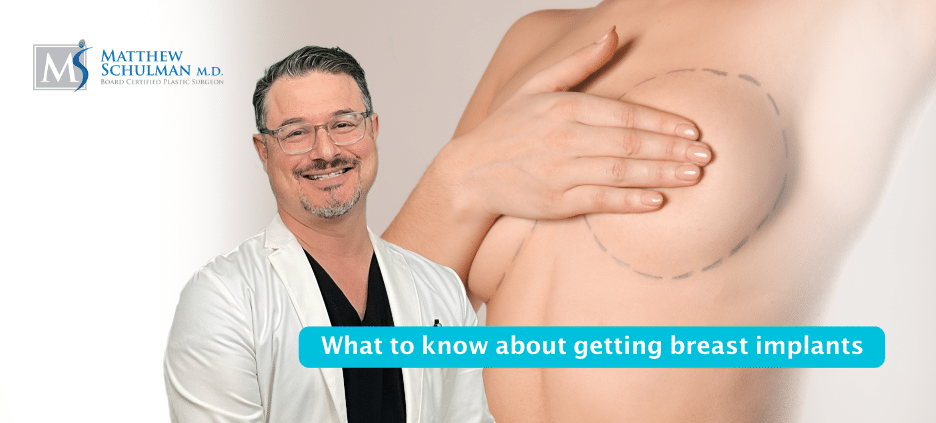Breast Augmentation surgery is a procedure to increase the size of the breasts by inserting breast implants. Breast Augmentation with breast implants is the most popular procedure performed by Board Certified Plastic Surgeons. There were over 280,000 breast augmentations performed in the United States during 2019, making it the number one plastic surgery procedure.
Breast augmentation procedures have been the most popular cosmetic surgery for many years. The advancing implant technology, combined with improved surgical techniques that offer a more rapid recovery, are some of the reasons why this procedure continues to be so popular.
If you are considering breast augmentation with breast implants, there are some important things to consider. These include: the type of implant, implant size, incision placement, implant placement, and surgeon selection. Continue reading to learn more about: What to know about getting breast implants?
Type of Breast Implants
Types of Breast Implants generally fall into the category of Saline implants or Silicone implants. This refers to the internal contents of the implant. All implants have a thin silicone rubber shell, but some are filled with saline fluid (salt-water) and some are filled with a silicone gel. It is this fill material that classifies it as either saline or silicone. Let’s discuss the differences
Saline implants are essentially a water balloon. This means that the can show rippling and wrinkling. Some women report a sensation of “sloshing” and the implants can feel firmer than natural tissue. Silicone gel, however, is more like a slime, so sloshing will not occur and rippling and wrinkling in silicone implants is less common.
Most patients and plastic surgeons would agree that silicone gel filled implants tend to look and feel more like a natural breast. During your consultation with a board certified plastic surgeon, he or she may recommend one type of implant over another based on your desired appearance, and amount of native breast tissue. You should be sure you are comfortable with whichever type of breast implant procedure that you choose.
Breast Implant Size
The increase in breast implant size that you desire from breast surgery will dictate the implant size that you choose. The larger the implant, the larger your breasts will be after the surgery. This is very obvious. However, when selecting an implant size, you need to consider the amount of breast tissue that you are starting with.
For example, placing 300cc breast implants in a woman who has A cup breasts, will give a very different result than placing the same 300cc implants in a woman with a C cup breast. This is why when doing breast implant surgeries using online photos to help select you implant size can be misleading. You need to make sure that you focus on their “before” photo as well.
The other thing to consider about implant size is what size will fit your body. As silicone breast implants get larger, they also get wider. This means that a woman with a narrow chest, may not do well with large implants, since they will likely touch in the center (synmastia) or hang off the side of the chest wall (“side-boob”). Your surgeon will take measurement of your breasts and these measurements will be important in deciding which size breast implants fits you.
Additionally, if you have small breasts with tight skin, it will limit the size of the implant that you can get. If an implant stretches your skin, it can give a very unnatural appearance and can cause complications later. This is why your surgeon will do a “pinch test”, to determine how much you skin is able to stretch when the implant is placed.
In cases of breast asymmetry, where one breast is larger than the other, it is common to place implants of different volumes. For example, a larger implant can be placed in the smaller breast, and a smaller implant can be placed in the larger breast.
Breast Implants Incision Placement

The incision around the areola provides an opportunity for a well concealed scar, since the most scar tissue will be along the border of the darker areolar skin. However, if the areola is very small, it may not be possible to use this incision. Also, if someone is a poor healer and they make thick and raised scars, this would leave a bad scar right in the center of the breast. Some also report that the risk for nipple numbness is increased with this approach.
The breast fold incision is a very versatile approach. It provides direct access to the space beneath the breast or beneath the chest muscle. When the incision heals, the scar is well hidden in the breast fold, although this can be seen when the breast is lifted and sometimes when a bikini top rides up. The incision can vary in length depending on the size of implants being placed. This is the preferred incision for most plastic surgeons.
A third incision option for breast implant placement is the underarm. This is intended to provide the most hidden scar when healed. This approach is more technically difficult and there is a higher incidence of implants being in the incorrect position (malposition). Proper placement usually requires the use of a small camera to allow the surgeon to see what he/she is doing. This approach may be impossible for very large implants. Also, some women do find that if the scar becomes slightly raised, it is irritating when they shave their underarms.
Breast Implant Placement
Implant placement refers to the relationship between the breast implant and the chest muscle. Breast implants can be placed under or over the chest muscle (pectoralis major). This in independent of implant type, size and incision.
When an implant is placed under the chest muscle, the muscle offers an additional layer of covering to the implant. This means that on top of the implant is skin, tissue, and muscle. The more hidden the implant is, the more natural it looks. Placing an implant under the muscle, however, does increase the post-operative pain of the procedure and does extend the recovery time and activity restrictions after surgery. For women with very little tissue, placing an implant under the muscle is preferred. Also, there are several studies that show that placing an implant below the chest muscle reduces the rate of capsular contracture and infection.
When an implant is placed over the muscle, it is in the space between the breast tissue and the chest wall. This mean that the chest muscle is not disrupted during the surgery, so recovery is less painful and there are fewer restrictions. Because there is less tissue covering the after breast implant surgery, the implant will be more visible. This means that you will see more roundness to the breast which can be perceived as more “unnatural”. In women with a lot of tissue, placing an implant over the muscle may still look very natural.
Choosing your Surgeon
When selecting your surgeon for your breast augmentation with implants, you want to make sure you select a Board Certified Plastic Surgeon who is experienced with the breast augmentation procedure. You should take a look at the results your surgeon has achieved and make sure you are in agreement with his or her aesthetic. You also want to be sure that your surgeon has experience with the various implant types, sizes, incisions, and implant placements.
This will help ensure that he or she can appropriately guide you through implant surgery and allow you to choose the best options for your body and desires. You also want to be sure that your surgeon will allow you adequate time to select your implant size. I personally think you should avoid any surgeon who tells you that he or she will pick a size for you while you are in the operating room. You also want to find out where your surgeon performs their surgeries – in an office operating room, ambulatory surgery center, or a hospital.
Combining your Breast Implants with other procedures
It is very common to combine breast augmentation with breast implant procedure together with other procedures such revision surgery such as tummy tuck, liposuction, and Brazilian Butt Lifts. In some cases, your breasts also require a lift, and a breast lift can be performed as well. When combining multiple procedures into a single operation, it is commonly referred to as a “Mommy Makeover”.
Questions and Answers
What are signs of breast implant illness?
Chronic fatigue and headaches. Persistent joint and muscle pain. Unexplained respiratory difficulties. Hair loss and frequent skin rashes.
How long can you have breast cancer before knowing?
Breast cancer typically undergoes around 30 divisions before it becomes palpable. Up until the 28th division, neither you nor your doctor can manually detect it. In the case of most breast cancers, each division lasts approximately one to two months. Consequently, when you can finally feel a cancerous lump, the cancer may have been developing in your body for two to five years. This information was documented on May 16, 2017.
Schedule your Consultation
To learn more about breast augmentation surgery with Dr. Matthew Schulman, a board certified plastic surgeon in New York City, contact our office today by phone or through our website.
References
https://www.fda.gov/consumers/consumer-updates/what-know-about-breast-implants




